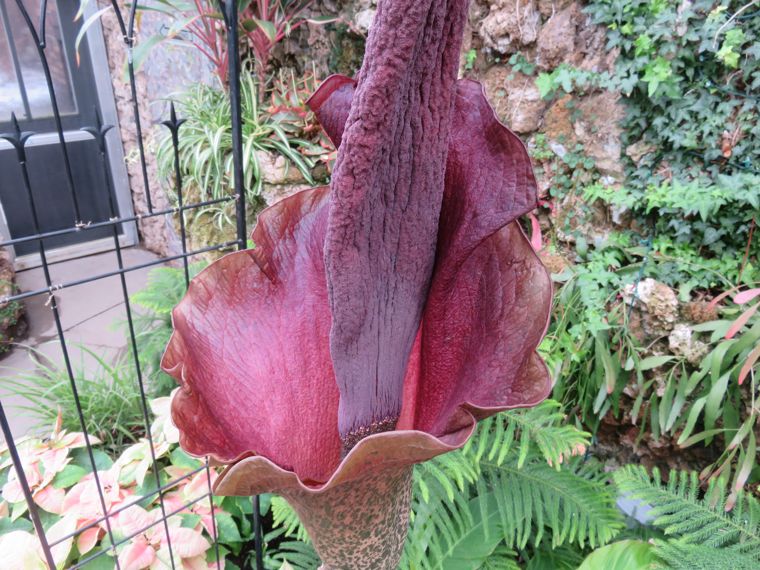Beautiful Plants For Your Interior

In the realm of botanical curiosities, the Voodoo Lily, scientifically known as Amorphophallus konjac, stands out not only for its striking appearance but also for its peculiar olfactory feature. This intriguing plant, while visually captivating, boasts an aroma that is often described as repugnant and unforgettable. In this article, we’ll dive into the fascinating world of the Voodoo Lily and its uncanny ability to produce an odor that leaves a lasting impression.
The Enigmatic Voodoo Lily:
The Voodoo Lily, native to Southeast Asia, is an enigmatic plant that draws attention for several reasons:
1. Unique Appearance: Its large, umbrella-like leaves and striking maroon and green patterns on its stem make it a visually arresting addition to gardens and collections.
2. Unusual Blooms: The Voodoo Lily produces peculiar, dark-red to maroon flowers with a single, tall, and phallic spadix that emerges from a surrounding spathe. This distinctive floral structure is both mesmerizing and puzzling.
3. An Unforgettable Stench: Perhaps the most notorious feature of the Voodoo Lily is its foul odor, which emanates when the flower blooms. The scent is often likened to the stench of rotting meat or, less romantically, dirty socks.
4. Pollination Strategy: The malodorous aroma serves a crucial purpose in the plant’s reproductive strategy. It attracts flies and other carrion insects, which are lured in by the scent, believing it to be a food source. In their quest for a meal, these insects inadvertently pollinate the plant, ensuring its survival.
Caring for the Voodoo Lily:
Despite its peculiar aroma, the Voodoo Lily can be a fascinating addition to a garden or plant collection. Here are some care tips:
1. Light: Provide bright, indirect light for healthy growth. Avoid direct sunlight, which can scorch the leaves.
2. Soil: Plant in well-draining, loamy soil to prevent waterlogging.
3. Watering: Keep the soil consistently moist but not waterlogged during the growing season. Reduce watering in the dormant period.
4. Dormancy: Voodoo Lilies typically go dormant during the winter months. During this period, reduce watering and allow the plant to rest.
5. Fertilization: Feed with a balanced fertilizer during the growing season, but avoid over-fertilization.
Conclusion: A Botanical Oddity for the Brave:
The Voodoo Lily, with its remarkable appearance and unforgettable aroma, is a plant that beckons the curious and the adventurous. While its scent may not be everyone’s cup of tea, it serves a vital role in the plant’s survival strategy, reminding us that even the most unusual aspects of nature have a purpose. So, if you dare to welcome the Voodoo Lily into your garden or collection, be prepared for an experience that engages all the senses, including one you won’t soon forget—smell.